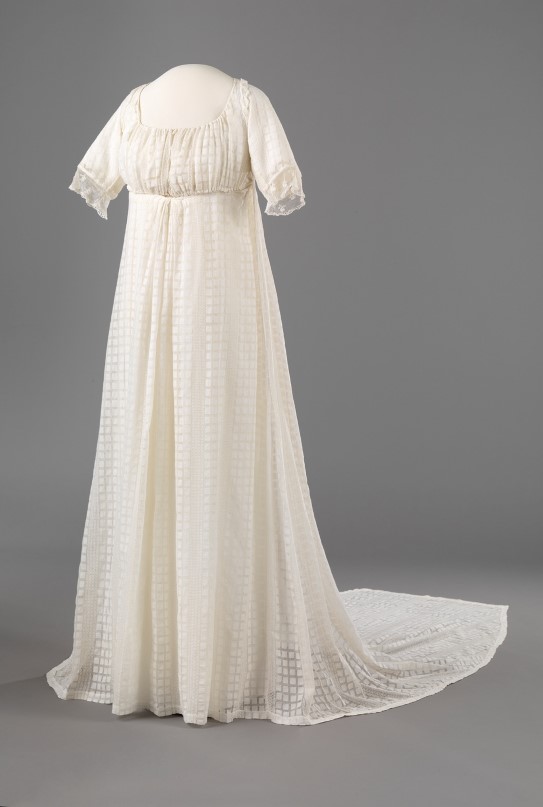Dress
Unidentified artist
Transcription
Ragnhild Brochmann:
When you see this dress, you might think: Well, there’s not much to say about that. It’s fairly ordinary - just a nice simple frock. And, of course, you would be completely … wrong!
Narrator:
The art and fashion historian Ragnhild Brochmann explains how the early nineteenth century, in the years after the French Revolution, saw radical changes to women’s fashion.
Seldom have clothes so accurately reflected events in wider society.
Ragnhild Brochmann:
So what was happening? Well, Marie Antoinette had been beheaded, France was on its way to becoming a republic, and nothing encapsulated the defining spirit of the age better than the dream of ancient democracies.
Narrator:
But how should one look in a society that aspired to a return to Classical Greece or the Roman Empire?
Ragnhild Brochmann:
Or, to put it another way, how should one dress to show that one has completely finished with absolute monarchy – the oppression, the extravagance, and the unwholesome indulgence? Just peel away the excess layers of clothing!
Today, to our eyes, this dress looks merely cute, even modest perhaps. But in the early nineteenth century, this way of dressing was utterly radical. And just a few decades earlier, wearing this style of dress would have been pretty much like going out in public completely naked.
Narrator:
And for those of you wondering about the red woollen shawl with the paisley pattern.
Ragnhild Brochmann:
Why is it there? Well, we have to remember that in chilly Scandinavia, where we also adopted this fashion, these lightweight dresses were known for causing pneumonia — unless you were very careful.